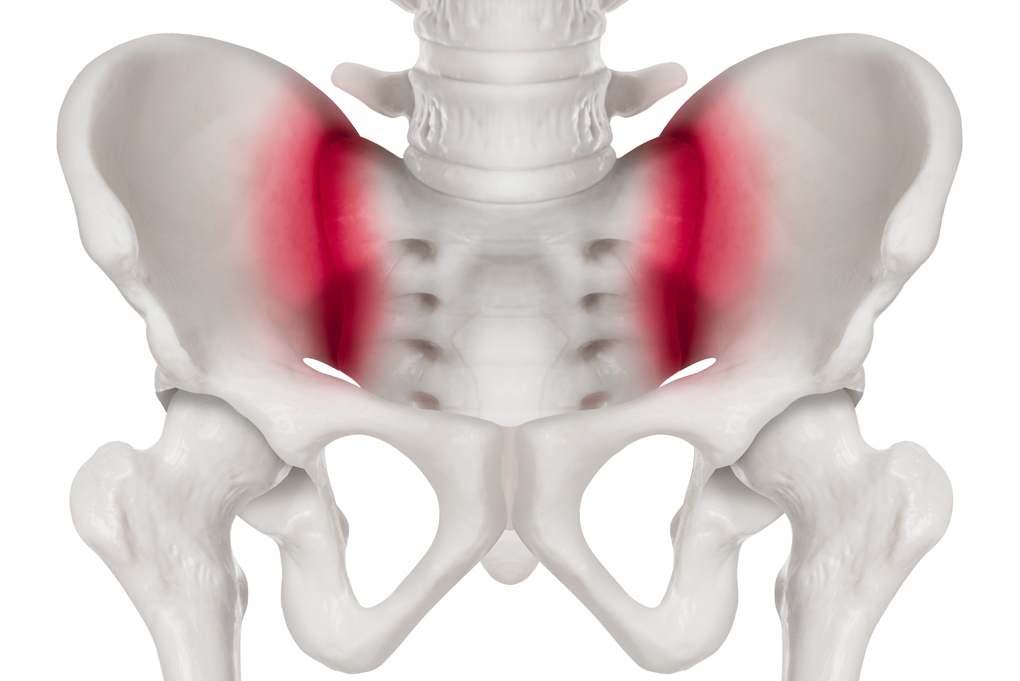About SI Joint Pain
SI Joint Pain occurs when the joints connecting the portion of the spine below the lumbar, the sacrum, and the iliac crest of the pelvis are affected. This pain can mimic sciatica, but involves abnormal stress on the joint rather than the sciatic nerve.
Normally a fairly immobile joint, excessive strain can irritate this region of the spine causing paint. x-rays will typically be taken to rule out lumbar disk herniation or degeneration, and local anesthetic may both provide relief and aid in determining the cause of pain. It is typically injected by needle guided with USG or x-ray to the affected side.

About SI Joint Pain
SI Joint Pain occurs when the joints connecting the portion of the spine below the lumbar, the sacrum, and the iliac crest of the pelvis are affected. This pain can mimic sciatica, but involves abnormal stress on the joint rather than the sciatic nerve.

Normally a fairly immobile joint, excessive strain can irritate this region of the spine causing paint. x-rays will typically be taken to rule out lumbar disk herniation or degeneration, and local anesthetic may both provide relief and aid in determining the cause of pain. It is typically injected by needle guided with USG or x-ray to the affected side.
![dr ronjon paul md (1020x681px) - how is [condition] managed? https://paulspine.com/wp-content/uploads/2021/01/dr-ronjon-paul-md-1020x681px-how-is-condition-managed.jpg](https://paulspine.com/wp-content/uploads/2021/01/Dr-Ronjon-Paul-MD-1020x681px-How-is-condition-managed.jpg)
How is SI Joint Pain managed?
The first line of treatment of SI pain is typically a combination of ice and anti-inflammatory drugs. In the event that these fail to provide adequate relief, an injection of steroids and numbing agents will usually be performed to provide more targeted relief. Additionally, radio frequency ablation can be performed to destroy the pain sensitive fibers causing issues.
If conservative treatments fail to bring the condition to manageable levels, your doctor may recommend an SI fusion to eliminate the problematic motion. A small incision is made to access the spine, and stabilizers are placed across the joint to prevent undesirable motion. As familiarity with this condition has spread, so have the options for treatment.
![dr ronjon paul md (1020x681px) - how is [condition] managed? https://paulspine.com/wp-content/uploads/2021/01/dr-ronjon-paul-md-1020x681px-how-is-condition-managed.jpg](https://paulspine.com/wp-content/uploads/2021/01/Dr-Ronjon-Paul-MD-1020x681px-How-is-condition-managed.jpg)
How is SI Joint Pain managed?
The first line of treatment of SI pain is typically a combination of ice and anti-inflammatory drugs. In the event that these fail to provide adequate relief, an injection of steroids and numbing agents will usually be performed to provide more targeted relief. Additionally, radio frequency ablation can be performed to destroy the pain sensitive fibers causing issues.
If conservative treatments fail to bring the condition to manageable levels, your doctor may recommend an SI fusion to eliminate the problematic motion. A small incision is made to access the spine, and stabilizers are placed across the joint to prevent undesirable motion. As familiarity with this condition has spread, so have the options for treatment.
How is SI Joint Pain diagnosed?
Diagnosis can usually be made on patient history and physical examination alone. Radiographs may be taken such as x-ray or CT to better visualize the structures of concern, but often are not required to make the initial diagnosis.
![dr ronjon paul md (1020x681px) - how is [condition] diagnosed? https://paulspine.com/wp-content/uploads/2021/01/dr-ronjon-paul-md-1020x681px-how-is-condition-diagnosed.jpg](https://paulspine.com/wp-content/uploads/2021/01/Dr-Ronjon-Paul-MD-1020x681px-How-is-condition-diagnosed.jpg)
![dr ronjon paul md (1020x681px) - how is [condition] diagnosed? https://paulspine.com/wp-content/uploads/2021/01/dr-ronjon-paul-md-1020x681px-how-is-condition-diagnosed.jpg](https://paulspine.com/wp-content/uploads/2021/01/Dr-Ronjon-Paul-MD-1020x681px-How-is-condition-diagnosed.jpg)
How is SI Joint Pain diagnosed?
Diagnosis can usually be made on patient history and physical examination alone. Radiographs may be taken such as x-ray or CT to better visualize the structures of concern, but often are not required to make the initial diagnosis.








